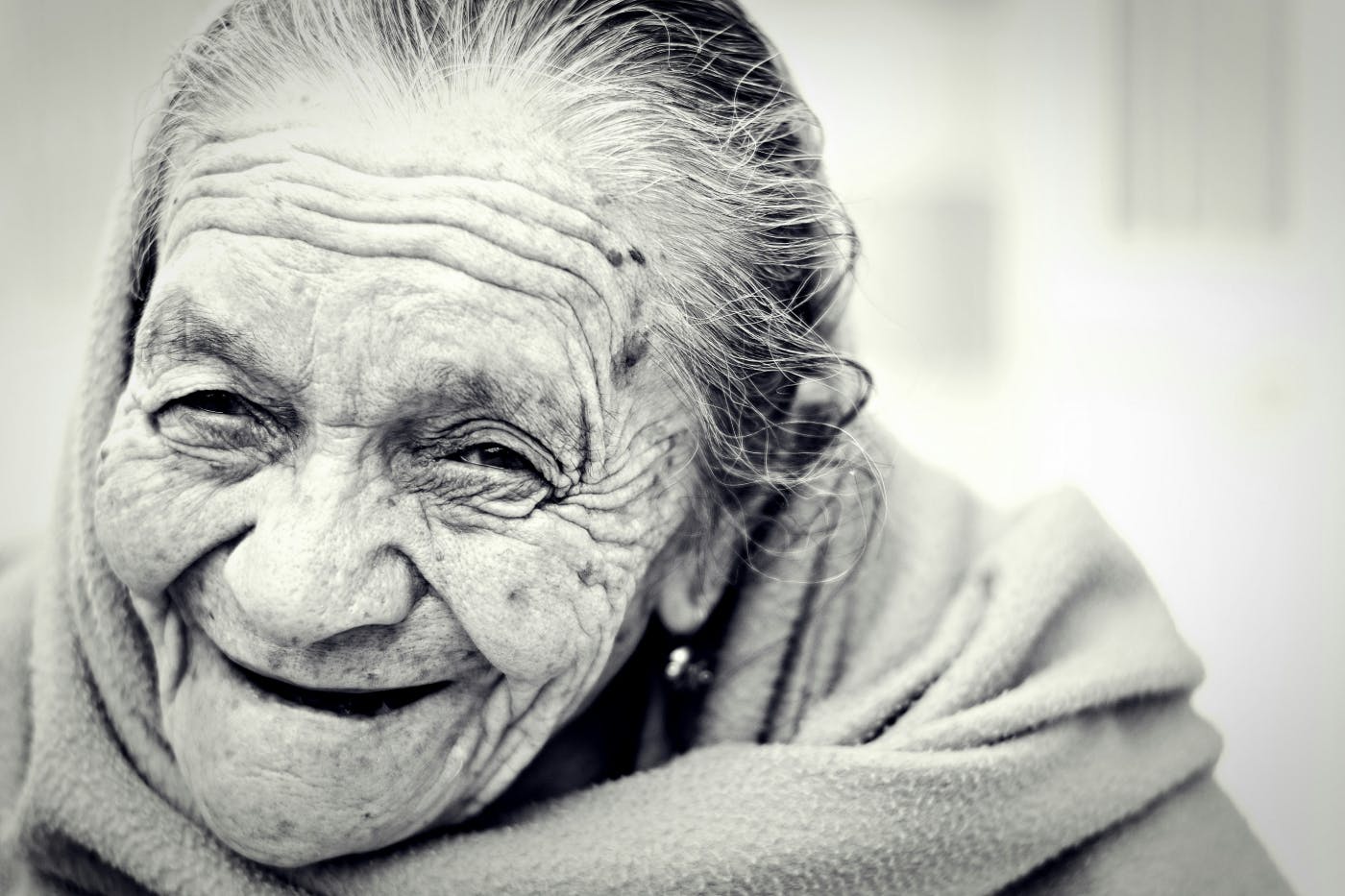

In a world flooded with messages about self-acceptance and the importance of 'being your best you,' the beauty and wellness industries continue to push the idea that perfection—especially in body image—is not only achievable but essential.
When is it enough? When do we stop chasing the latest anti-aging treatments or turning to injections that promise to melt away 90% of your body fat? At what point do we look at ourselves and say, ‘This is enough’? Dove, a brand that championed beauty on your own terms with its 'Real Beauty' campaign, showed us a world where all women—of different shapes, sizes, colors, and races—could embrace their own unique beauty. But why didn’t that feel like the end of the conversation? Why, instead, are we now seeing a new wave of weight-loss drugs with dangerous side effects—like thyroid tumors, pancreatitis, and kidney damage—that promise to deliver on the same beauty ideal, but at what cost?
Take Meghan Trainor, for example. Her hit song 'All About That Bass' made a bold declaration: 'I ain’t no size two,' encouraging women to love their bodies and embrace self-acceptance. But after finding fame, Trainor embarked on a weight-loss journey of her own. This shift forces us to ask: Why do those who once promoted body positivity change their message when they achieve fame and wealth? Are they simply responding to the same societal pressures we all face, or are they setting a dangerous precedent? And more importantly, what responsibility do brands have in this equation? When they promote products that promise the 'ideal' body—despite the risks—what do they really owe the public?
In a world flooded with messages about self-acceptance and the importance of 'being your best you,' the beauty and wellness industries continue to push the idea that perfection—especially in body image—is not only achievable but essential. Dove’s 'Real Beauty' campaign sought to redefine beauty by celebrating diversity, yet brands today still peddle products that promise transformation, often with dangerous side effects. This leaves us to ask: Are brands truly committed to helping us feel good about ourselves, or are they simply capitalizing on our insecurities? Through examples like Meghan Trainor’s shift from body positivity to a weight-loss journey, we’ll explore how brands shape—and sometimes distort—our understanding of beauty, health, and self-worth. At the heart of this is one simple question: What do brands owe the public when it comes to truth, authenticity, and their impact on our lives?"

Dove's "Real Beauty" Campaign: A Step Forward
In 2004, Dove launched its groundbreaking "Real Beauty" campaign, which quickly became a defining moment in the beauty industry. The campaign challenged conventional standards by celebrating diversity in all its forms—showing women of various shapes, sizes, colors, and ages, all with their own unique beauty. Dove’s message was clear: beauty is not defined by a number on the scale or by a narrow, idealized version of what a woman should look like. It was about empowering women to embrace who they are and redefine beauty on their own terms.
At its core, Dove’s campaign spoke to something that society had been neglecting for decades: that every woman is beautiful, regardless of how closely she matches the media’s narrow beauty ideals. It wasn’t just about selling products—it was about starting a movement that valued authenticity over perfection. In many ways, Dove was ahead of its time, providing an antidote to the unrealistic portrayals of beauty that dominated advertisements.
However, despite its positive impact, the question remains: Why didn’t Dove’s message mark the end of the conversation about beauty standards? Why, in 2023, are we still being bombarded with ads for products that promise to erase wrinkles, shrink waistlines, or transform bodies into an "ideal" that is anything but real?
The answer lies in the broader narrative of the beauty and wellness industries, which, while evolving, are still heavily driven by profit and societal pressures. Dove’s campaign was an important step in the right direction, but as long as brands continue to capitalize on insecurities by offering quick fixes and unrealistic transformations, the message of true beauty will remain an uphill battle.
Brands like Dove have set the bar for authenticity, but they’ve also shown us just how much work is left to be done. So, while Dove’s approach stands as a beacon of progress, the truth is that the wellness and beauty industries are still filled with messages that distort our understanding of what it means to be beautiful, healthy, and happy. And nowhere is this more evident than in the rising popularity of weight-loss drugs—products that promise to help people achieve the “ideal” body at any cost, even when that cost includes serious side effects.
The Rise of Weight-Loss Drugs: A Step Backward?
In recent years, weight-loss drugs like Ozempic and Wegovy have made headlines for their ability to rapidly reduce body fat. Marketed as quick fixes for those struggling with obesity or seeking the "perfect" body, these drugs promise results that seem too good to be true. And in many ways, they are. While they deliver significant weight loss, the side effects are nothing short of alarming, ranging from thyroid tumors and pancreatitis to kidney damage and vision changes. For many, the promise of quick results comes at an enormous cost to their health.
But even with these risks clearly outlined, brands continue to push these drugs with little regard for the long-term implications on their customers' well-being. What’s more, the marketing surrounding these weight-loss solutions often glosses over these dangerous side effects, focusing instead on the allure of an idealized body. It’s a prime example of the wellness industry capitalizing on insecurities and perpetuating the notion that happiness, success, and self-worth are tied to physical appearance. These drugs are marketed not just as medical solutions but as ways to achieve societal ideals of beauty and perfection, regardless of the real dangers involved.
In many ways, these weight-loss drugs represent a contradiction to the positive messages that brands like Dove have worked to promote. While Dove's campaign embraced the idea that beauty comes in all shapes and sizes, today’s weight-loss drugs are reinforcing the idea that thinness is the ultimate form of beauty. Brands continue to profit from perpetuating these ideals, despite the harm they may cause in the long run. This raises an important question: What responsibility do these brands have in offering products that may compromise the health and well-being of their customers in the pursuit of profit?
As consumers, we’re often left to navigate this confusing landscape of beauty standards, body image, and health. Brands continue to flood our feeds with images of the "perfect" body, while simultaneously offering products that promise to get us there, no matter the cost. But where do we draw the line between promoting healthy living and exploiting consumers’ deepest insecurities? The real question here is whether brands are doing enough to address the impact they have on public health and self-image.
These weight-loss drugs, with their dangerous side effects and idealized promises, highlight a disturbing pattern in the beauty and wellness industries—one that thrives on insecurity and the constant need for "improvement." But the pressure to conform to these beauty standards isn’t just coming from brands; it’s coming from society as a whole. Celebrities, like Meghan Trainor, who once celebrated body positivity, are now changing their messages to align with these same standards. Trainor’s shift offers a fascinating glimpse into the pressures faced by public figures to uphold an image of "perfection," despite their past messages of self-acceptance.

Meghan Trainor: The Pressure to Conform
Meghan Trainor's hit song "All About That Bass" became an anthem for body positivity, celebrating the message that women of all shapes and sizes are beautiful just the way they are. The song's lyrics, "I ain't no size two," sent a powerful message about self-acceptance and loving your body without apology. At the time, Trainor was praised for her bold stance on body image, encouraging millions of fans to embrace their own uniqueness.
However, after achieving fame and success, Trainor's personal journey took a different turn. In recent years, she has undergone a weight-loss transformation, which has sparked conversations about the relationship between body positivity and weight loss. What’s particularly striking is how the media has framed her decision. Headlines like "Meghan Trainor finally admits to using weight loss drugs" highlight a sense of shame, as though this is a personal secret or something to be hidden. Yet, weight-loss drugs like Ozempic are being marketed to the masses, with an increasingly growing number of people using them, making it a normalized choice for many.
This kind of media framing creates a contradiction: on one hand, weight-loss drugs are being advertised and sold as quick fixes, while on the other, celebrities who use them are made to feel as though they are somehow confessing a hidden truth. The pressure on public figures to conform to certain beauty standards is immense, and for someone like Trainor—who once championed body positivity—the shift is a reminder of how powerful societal beauty norms can be. But it also highlights the broader issue: why should there be shame in using something that’s so widely available and accepted in mainstream culture?
In my opinion, Trainor was beautiful, and when she sang, she sang from a place of personal truth, and that made her even more attractive. But, it brings us back to the central question: What responsibility do brands have when it comes to shaping public perception?
Trainor’s journey is just one example of the delicate balance between personal health choices and the immense pressure to conform to societal beauty ideals. It brings us back to the central question: What responsibility do brands have when it comes to shaping public perception? If they continue to profit from pushing unrealistic standards of beauty, they must ask themselves: Are they promoting authenticity and self-acceptance, or are they contributing to the cycle of insecurity and shame that affects consumers on a daily basis?
The Path Forward: What Brands Can Do Differently
The conversation we’re having today is not just about pointing out what's wrong—it’s about envisioning a better future, one where brands embrace their power to influence not just what we buy, but how we see ourselves. The foundation of this future lies in something simple yet profound: self-love. This isn't just a catchphrase; it's a mindset. Brands have the opportunity to play a major role in helping people cultivate this mindset, encouraging us to love ourselves, not for what we could be, but for who we already are.
Authenticity has to be at the heart of every brand’s message. It’s about celebrating real, diverse bodies and encouraging people to find beauty in their own truth. But authenticity goes beyond appearances—it means aligning brand actions with values that promote long-term well-being, rather than quick fixes that prey on insecurities. Instead of focusing on weight-loss drugs with serious side effects, brands can shift to offering products that enhance self-care, promote health, and celebrate the beauty of living in our own skin.
Transparency is key. Consumers deserve to know what they're getting, not just in terms of the product but in terms of the impact it has on their lives and their well-being. Brands that take the lead in promoting honest, ethical marketing will not only build trust but will help shift the entire conversation from external perfection to internal authenticity. By openly addressing the beauty standards they promote, they can begin to challenge harmful societal norms and create space for more inclusive, compassionate narratives.
The impact of brands goes far beyond selling products; they have the power to shape culture, influence self-perception, and guide people toward healthier, more fulfilling lives. If brands can embrace this responsibility, focusing on self-love, authenticity, and transparency, they can help transform how society views beauty, not as something to attain, but as something to embrace.
This isn’t just about rethinking beauty standards; it’s about reimagining the role brands play in our lives. When brands embrace their ethical responsibility, they can shift the narrative in a way that celebrates who we are, rather than focusing on who we’re told we should be. And in doing so, they’ll help foster a culture of self-love, acceptance, and authenticity. The question is, can we trust brands to take that leap and give us the truth we deserve?

Summing Up: What Do Brands Owe the Public?
When we look at the role brands play in our lives, it’s clear they have immense power—not just to sell products, but to shape cultural norms and influence how we see ourselves. From Dove’s "Real Beauty" campaign to the rise of weight-loss drugs, we’ve seen both the positive and negative ways brands can impact self-image and societal beauty standards. But the question remains: What do brands truly owe the public?
The answer is simple: truth and authenticity. Brands have a responsibility to be transparent about what they’re selling and its impact on consumers. They can no longer afford to profit from insecurities or perpetuate harmful beauty standards. Instead, they must lead by example, celebrating diversity, promoting healthy lifestyles, and fostering self-love. The power brands wield can be used to create a more inclusive, compassionate world—one where people are encouraged to embrace who they are, rather than chase an unattainable ideal.
Ultimately, brands owe the public the freedom to love themselves, just as they are. They can help rewrite the narrative around beauty by focusing on authenticity, transparency, and self-acceptance. And in doing so, they can inspire not just change in the marketplace, but a shift in how we see ourselves and one another.
